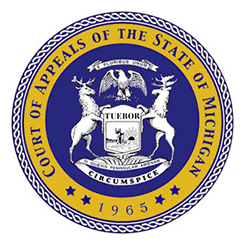In a recent unpublished decision, the Michigan Court of Appeals affirmed summary disposition for the defendant
no-fault insurer.

The Court examined three issues on appeal: (1) whether a no-fault priority defense is an affirmative defense that must be asserted in a responsive pleading; (2) whether the plaintiff was an occupant of the vehicle when bent over the front of a lawfully parked vehicle; and (3) whether the parked vehicle was involved in the accident. On each of these three issues, the court affirmed summary disposition.
In McCallister v Vuich, the plaintiff sought both no-fault insurance benefits from Liberty Mutual Fire Insurance Company and third-party negligence damages from the at-fault drivers, arising out of a motor vehicle accident. The plaintiff was injured when a cement truck was involved in an accident with another vehicle and then slid into a parked pickup truck that the plaintiff was standing in front of. The pickup truck was owned and insured by his fiancée, with whom he lived. The plaintiff testified that he regularly drove the pickup truck for personal use and for his landscaping and snowplowing business. The plaintiff did not have his own no-fault insurance policy, nor did he live with a resident relative with an insurance policy.
On the date of the accident, the plaintiff drove the pickup to an auto parts business for maintenance on the truck’s detachable snowplow. He parked the pickup, turned off the ignition, partially opened the hood, and then exited the pickup, shutting the door. He walked around to the front of the pickup and was “standing, maybe bent over a little bit” working on the wires that protruded from the grill and were attached to the snowplow. He next heard a crash and saw a truck coming towards him. He tried to move out of the way, but the next thing he knew, he was on the ground.
The plaintiff sustained injuries and filed suit against his fiancée’s no-fault insurer, as well as the drivers and owners of the other vehicles that caused the accident. The no-fault insurer moved for summary disposition under MCR 2.116(C)(8) and (10), and the trial court granted summary disposition under MCR 2.116(C)(10), finding that there was no genuine issue of material fact that the plaintiff was not an occupant of the insured vehicle and that the vehicle was not “involved” in the accident. As such, the no-fault insurer was not the highest insurer in priority for payment off the plaintiff’s no-fault claims.
On appeal, the plaintiff raised three issues. First, he contended that because the no-fault insurer did not assert no-fault priority as an affirmative defense in its first responsive pleading, it was precluded from raising it as a defense. The Court of Appeals held that no-fault priority is not a defense that must be asserted in a party’s first responsive pleading. The court held that “an affirmative defense presumes liability by definition.” The no-fault insurer asserted that the plaintiff failed to establish that it was the highest-priority insurer and that it was not liable for the plaintiff’s no-fault insurance benefits. The court held that because no-fault priority defenses serve to rebut a plaintiff’s prima facie case, the no-fault insurer did not waive its priority defense by failing to assert it in its first responsive pleading.
Second, the plaintiff contended that he was an “occupant” of the vehicle, which entitled him for no-fault benefits from the no-fault insurer under MCL 500.3114(4), a provision that allows the occupant of a vehicle to claim no-fault benefits from the insurer of the owner of the vehicle occupied. The Court of Appeals disagreed that the plaintiff was an occupant of the vehicle because his testimony was clear that he was not inside or upon the vehicle during the accident.
Finally, the plaintiff contended that the pickup truck was “involved” in the motor vehicle accident, which would have caused the no-fault insurer to become liable for paying no-fault benefits. The Court of Appeals disagreed, citing the parked vehicle exceptions in the no-fault act under MCL 500.3106. The trial court correctly determined that the pickup truck was properly parked in a parking lot and was not parked in such a way to cause unreasonable risk of bodily injury. The court further held that the plaintiff’s testimony established that the injury was not sustained while occupying, entering into, or alighting from the vehicle. There was also no evidence that the injury was a direct result of any equipment permanently mounted on the vehicle. Instead, based on the evidence, the first accident involved two other vehicles. One of the vehicles then hit a stationary object that happened to be the plaintiff’s parked pickup truck. But the parked pickup truck was not involved in the accident because it fell under the parked vehicle exception in the no-fault act.
Even though this case is unpublished, it will help bolster the strength of defenses uncovered throughout discovery that rebut a plaintiff’s prima facie case against defendants.

Katelyn M. DePrekel
An associate in the firm’s Insurance Defense group, Katelyn DePrekel handles a docket that includes first-party no-fault, third-party automobile negligence, insurance fraud, and other matters.

